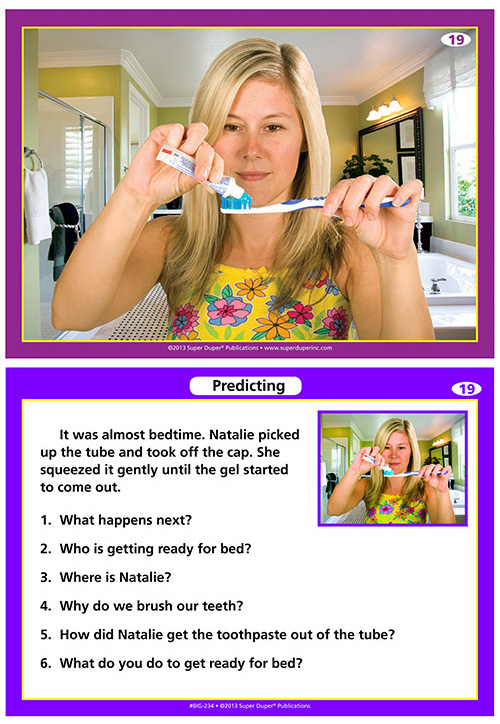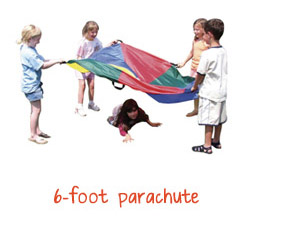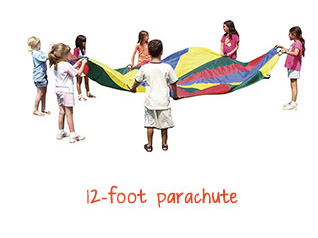Ideal for auditory and visual learners, Speaker’s Box helps strengthen oral language skills in whole-class or small-group settings, as well as in one-on-one instruction. This week only, take 15% off* your order of Speaker’s Box by using promo code SPEAKER at checkout.

With Speaker’s Box, students reach into the box, choose a color-coded prompt card, and then start chatting. There are four color-coded categories included:
 What’s Happening Here?/What Comes Next? has the students talk about what is going on in the picture or what might happen next.
What’s Happening Here?/What Comes Next? has the students talk about what is going on in the picture or what might happen next.- Step by Step has students look at the picture and correlating question on the back to give detailed directions on how to do something.
- Would You Rather? presents questions that students answer with a personal statement based on the first thing that comes to mind.
- Things You Like Best also asks students questions about their preferences and to explain why.
This is a great teaching tool that fosters receptive and expressive language, peer interaction, perspective-taking, and more. The set includes eighty-six 2.5-inch square write & wipe-cards (14 are blank for customization) in a nifty storage box. This game is recommended for children ages 6 and up.
Don’t forget to use our promo code SPEAKER this week to save 15%* on your set of Speaker’s Box.
*Offer is valid until 11:59pm EST on November 11th, 2014. Not compatible with any other offers. Be sure there are no spaces or dashes in your code at check out!



 Bridge Kids Social Circle
Bridge Kids Social Circle Bridge Kids Happy Eaters Group
Bridge Kids Happy Eaters Group Look, Listen & Infer
Look, Listen & Infer












 Teaching language skills is one of the most frequent needs for children with autism, but also one of the most misunderstood skillsets amongst both parents and practitioners. The desire to hear your learner speak in full sentences can be overwhelming, making it especially difficult to take a step back and consider what it means to communicate and how communication skills develop in neurotypical children. Many times we get hung up on what a child should be capable of communicating at a certain age, rather than focusing on what they are capable of communicating at this stage of development.
Teaching language skills is one of the most frequent needs for children with autism, but also one of the most misunderstood skillsets amongst both parents and practitioners. The desire to hear your learner speak in full sentences can be overwhelming, making it especially difficult to take a step back and consider what it means to communicate and how communication skills develop in neurotypical children. Many times we get hung up on what a child should be capable of communicating at a certain age, rather than focusing on what they are capable of communicating at this stage of development.

